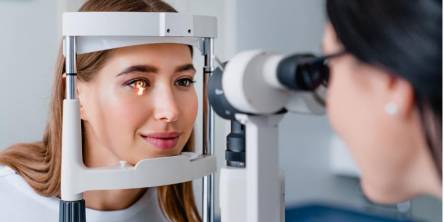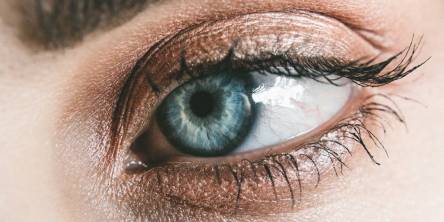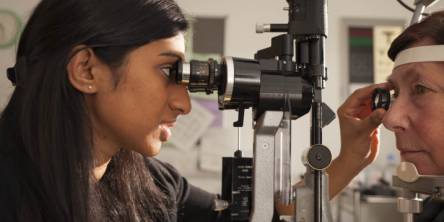5 Pink Eye Symptoms You Should Be Aware Of

Pink eye is an infection or inflammation of the conjunctiva, the transparent tissue that covers the inside surface of your eyelid and the outer membrane of your eyeball. When little blood vessels in the conjunctiva become inflamed, they’re also getting more visible. This results in the whites of your eyes looking red or pink. Pink eye typically occurs due to viruses and allergic reactions and is among the most common eye infections in both children and adults. More than 3 million cases of pink eyes occur in America annually.
Below are the most common symptoms of pink eye that you should be aware of.
1. Your eye is red or pink
As the name implies, the pink eye typically appears as pink or red in the eye. It most often results from a bacterial or viral infection that spreads just like the common cold. However, other kinds of pink eye aren’t contagious, and they may be caused by allergies, exposure to chemicals and irritants, or dry eye. These include:
- In the case of allergy-caused pink eyes, besides red eyes, you may also experience other symptoms including runny nose and sneezing. In allergic pink eyes, these symptoms are typically present in both eyes. Remember to wash your hands after touching your eyes to prevent the spread of infection.
- Pink eye caused by exposure to chemicals is called toxic pink eye and may occur due to getting liquids, smoke, fumes, or chemicals in the eye. The common symptoms of toxic pink eye include severe swelling and pain, redness, and low vision. Flashing your eyes with running water is necessary to wash out the toxic chemicals or liquids.
- Pink eye caused by dry eye often leads to increased tear production and typically doesn’t require any treatment. However, if it’s continuous, severe, or recurring, you should schedule an appointment with an eye doctor.
2. Your eye is leaking fluid
Viral pink eye usually causes white or clear discharge from your eyes, while bacterial pink eye typically causes pus-like or yellowish discharge. In the case of viral pink eye, avoid using antibiotic drops, as they won’t help. Instead, try applying warm and cool compresses to your eye to minimize inflammation until the problem subsides on its own. Pink eye resulting from bacteria typically clears up by itself within several weeks, but you may benefit from antibiotic eye drops if your symptoms worsen.
3. Your eye feels crusty
With bacterial pink eye, your body stimulates the production of mucus and pus to help fight off the bacteria. That mucus may form a film over the affected eye and distort your vision for a short period. When you keep your eyes shut while sleeping, this mucus may dry out and form a crust along each of your eyelashes. Avoid tugging at your encrusted eyelashes because you can unintentionally pull them out and create a window for more bacteria to enter your eye. Try using a damp piece of cloth to soften the crusty mucus and carefully wipe it away.
4. Your eyes are more irritated than normal during allergy season
If you’re allergic to certain things, and experience severe irritation, redness, itching, or tearing in your eyes, it may be a sign of an allergy-caused pink eye. This type of pink eye isn’t contagious or infectious and can be cured with allergy eye drops or oral allergy drugs.
5. Your cold is affecting your eyes
If you’ve just come down with an upper respiratory tract infection and experience irritation in your eyes, it may be one of the symptoms of pink eye. The virus may spread to your eyes after you’ve coughed and then touched your face or eyes without washing your hands.
Similar Articles
Considering the critical role that your eyes play in your overall well-being, it's important to protect it from any form of damage.
It is critical to ensure your child's overall health and vision. It is critical to schedule eye examinations for babies and young children throughout their early development. This is because early-onset eye problems can have a long-term influence on their eyesight
Maintaining eye health becomes increasingly important as people age. This is especially true for seniors, who are more susceptible to vision problems and eye conditions. Regular eye exams benefit older adults by helping protect healthy vision and prevent severe eye diseases.
Maintaining good eye health is crucial for overall well-being, yet many people overlook the importance of regular eye exams. Whether you’re searching for a “walk in eye exam near me” or scheduling an appointment with your regular optometrist, understanding the benefits of these exams can help you prioritize your eye health
People with diabetes who take Ozempic are at risk of developing not only diabetic retinopathy but also cataracts, glaucoma, and dry eye. Some eye symptoms, such as dry eyes, might be caused by both an underlying health issue and a pharmacological side effect, such as semaglutide-induced dehydration.
In today's digital age, we are constantly exposed to screens of various devices such as smartphones, laptops, and tablets. While these technological advancements have greatly improved our lives, they also come with a downside - digital eye strain.
You don't have to wait until you have visual problems to consult with an ophthalmologist. Regular examinations are recommended to detect the earliest signs of eye disease. You don't want to risk losing your vision in any way. This is why it's important to understand when you should see an eye doctor.
Taking care of your vision and overall eye health is essential for maintaining a good quality of life as you age. Hence, it’s not a good idea to overlook those regular eye exams as they are a crucial aspect of eye care. Read on to explore the most significant reasons for scheduling an appointment with an ophthalmologist, as well as the importance of professional eye care and early detection of potential problems with your vision.
Chandraprabha vati is a standardized herbal formulation mentioned in our ancient texts. This medicine is a mix of various ingredients in a tablet (Vati) form. Chandraprabha vati is a Rasayan (Rejuvenator) and Balaya (Strengthening). It is an analgesic, antispasmodic, anti-hyperglycemic, and a good blood purifier. It is indicated in a number of disorders.









